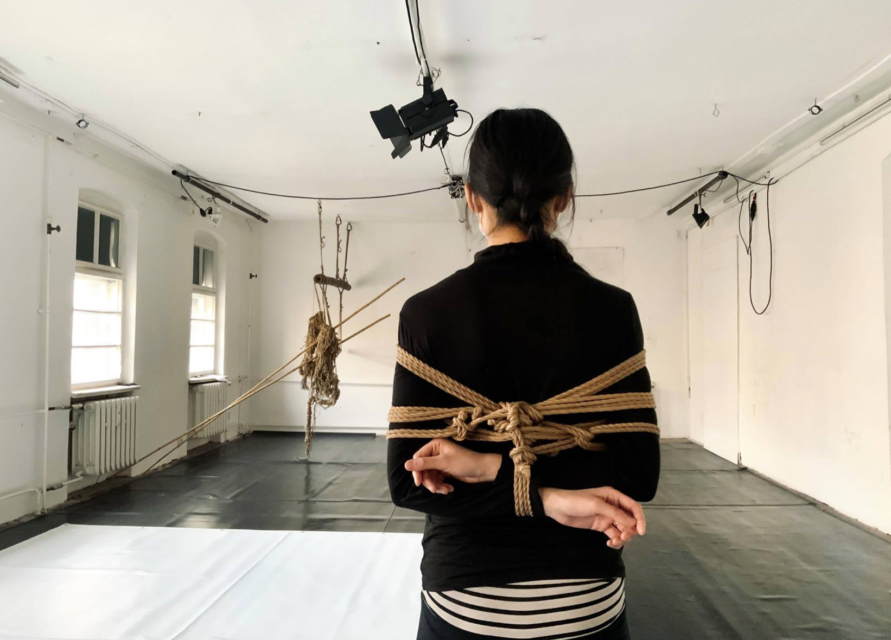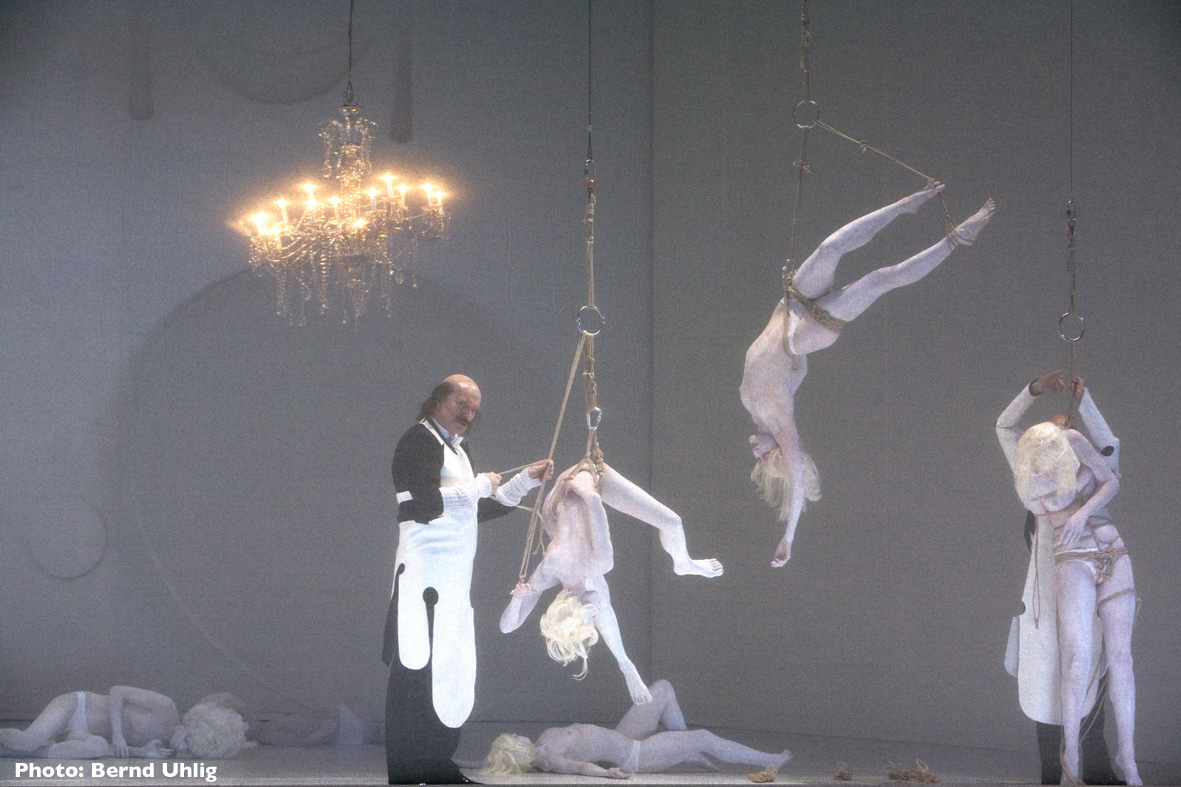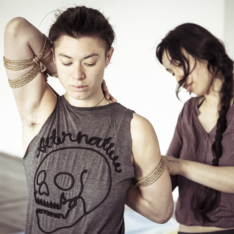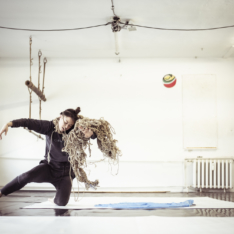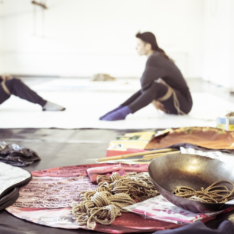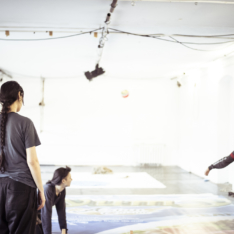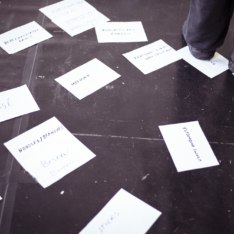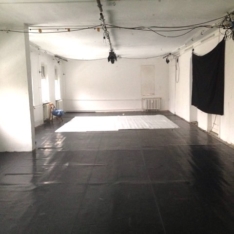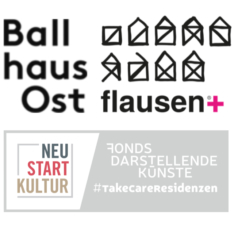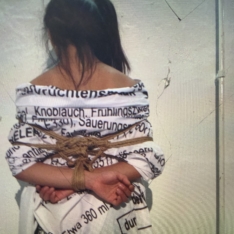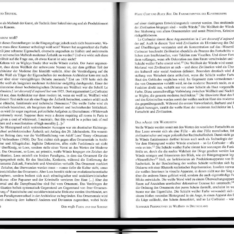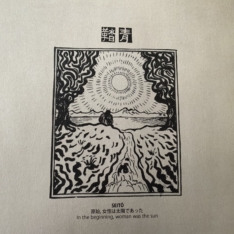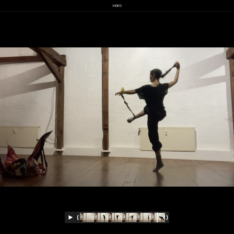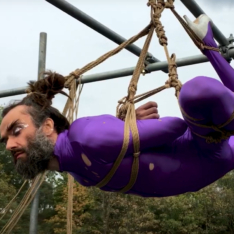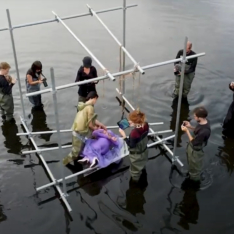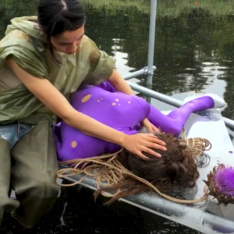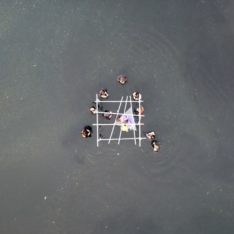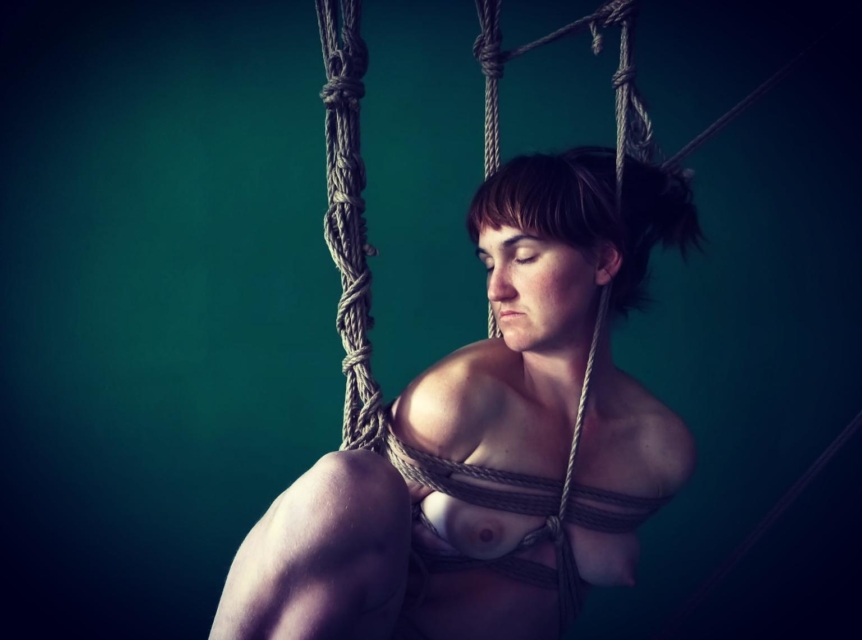Preparing ropes for the overture of Liz Rosenfeld’s and Rodrigo Garcia Alves’ current project at Sophiensaele.
DANCE/PERFORMANCE
This hospice is a dune, a neighborhood, an ocean, a meal, a club, an orgy, a cinema, a cruising ground, a long flight, and a lifelong embrace. This hospice is us, them, ours, no ones and yours. This hospice is unknown, and will continue to change.
In their first duet for the stage, Rodrigo Garcia Alves and Liz Rosenfeld explore their desire to understand and create their future hospice together. For this, they drag objects, stories, projections, fantasies, and experiments crafting future worlds for each other through experimental dance, text and video practices. Hailing from Brazil and the United States, Rodrigo Garcia Alves and Liz Rosenfeld met in Berlin almost a decade ago, and began to collaborate in their desires, experiences and stories connected to a queer position on death, dying, end-of-life care. What are the possibilities during this period of life regarding support for queer kin and families who are not related? How do we want to be seen and perceived in this vulnerable phase of life?
Together, they expanded these questions and met with different kinds of artistic practitioners who work with death in both pragmatic and creative ways: a palliative doctor, a death doula, a choir director, a bondage expert and a tattoo healer, among others. From these conversations Rodrigo Garcia Alves und Liz Rosenfeld have built their current hospice, this duet for the present.
PERFORMERS, CONCEPT AND DIRECTION Liz Rosenfeld & Rodrigo Garcia Alves ORIGINAL MUSIC Colin Self LIGHT DESIGN Catalina Fernández COSTUMES AND SET DESIGN Cardo Matos DRAMATURGY Season Butler ARTISTIC ADVISORY Valerie Renay PROP-MAKING Clarisse Canela SEAMSTRESS Dores Maués ARTISTIC ASSISTANCE An*dre Neely BONDAGE EXPERT Dasniya Sommer ARTISTIC SUPPORT/ HOSPICE DOCTOR Christian Küllmei ARTISTIC SUPPORT/PRODUCTION Maicyra Leão VIDEOGRAPHERS TINT Collective PRODUCER Joseph Wegmann


